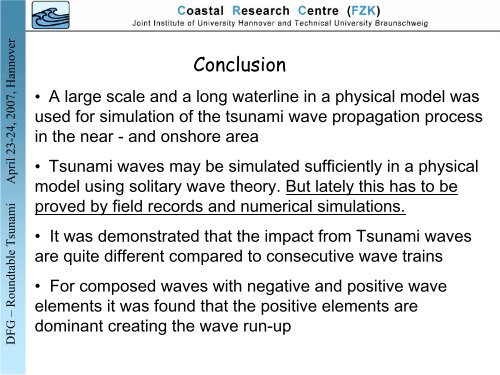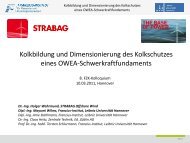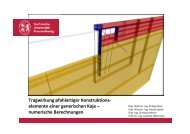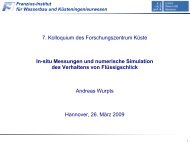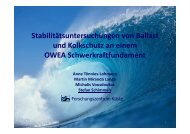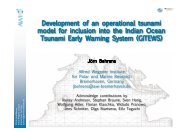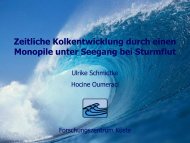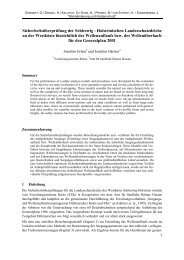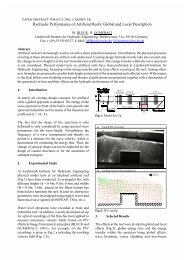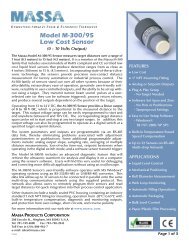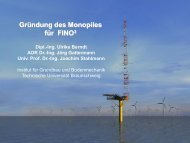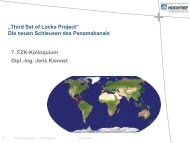Tsunami shoaling and run-up in the Large Wave Flume of ... - FZK
Tsunami shoaling and run-up in the Large Wave Flume of ... - FZK
Tsunami shoaling and run-up in the Large Wave Flume of ... - FZK
You also want an ePaper? Increase the reach of your titles
YUMPU automatically turns print PDFs into web optimized ePapers that Google loves.
DFG – Roundtable <strong>Tsunami</strong> April 23-24, 2007, Hannover<br />
Conclusion<br />
• A large scale <strong>and</strong> a long waterl<strong>in</strong>e <strong>in</strong> a physical model was<br />
used for simulation <strong>of</strong> <strong>the</strong> tsunami wave propagation process<br />
<strong>in</strong> <strong>the</strong> near - <strong>and</strong> onshore area<br />
• <strong>Tsunami</strong> waves may be simulated sufficiently <strong>in</strong> a physical<br />
model us<strong>in</strong>g solitary wave <strong>the</strong>ory. But lately this has to be<br />
proved by field records <strong>and</strong> numerical simulations.<br />
• It was demonstrated that <strong>the</strong> impact from <strong>Tsunami</strong> waves<br />
are quite different compared to consecutive wave tra<strong>in</strong>s<br />
• For composed waves with negative <strong>and</strong> positive wave<br />
elements it was found that <strong>the</strong> positive elements are<br />
dom<strong>in</strong>ant creat<strong>in</strong>g <strong>the</strong> wave <strong>run</strong>-<strong>up</strong>


